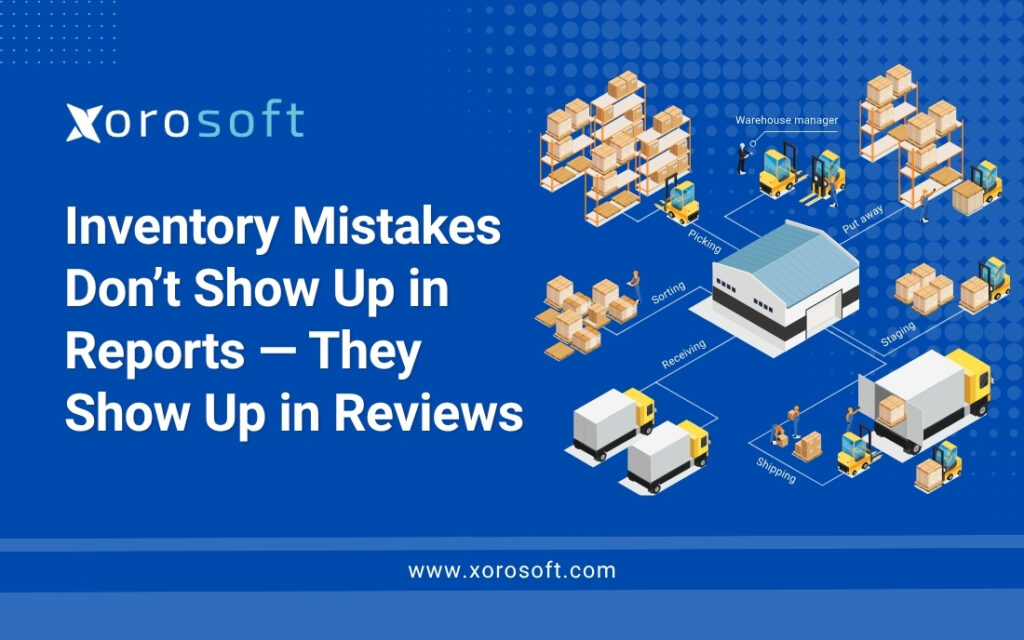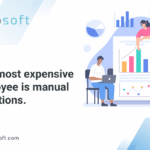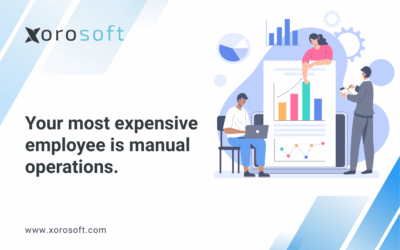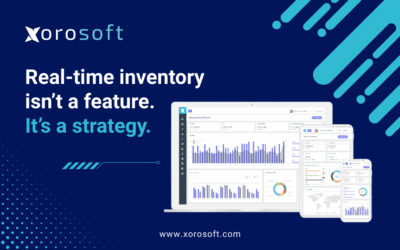
When Reports Look Fine, but Reviews Tell a Different Story
Here’s something most fast-growing businesses forget: inventory management errors rarely show up in reports first. However, they often appear where it matters most—publicly.
Instead of internal spreadsheets alerting you to mistakes, customers are the first to notice.
- “Wrong item received.”
- “Out of stock after I placed the order.”
- “Delay in shipping. Very disappointed.”
Each of these is a direct result of an internal breakdown. Yet the customer doesn’t care why it happened—only that it did. Consequently, these reviews hurt more than internal errors because they impact your public trust, conversions, and brand reputation.
When Reports Look Fine, but Reviews Tell a Different Story
Here’s something most fast-growing businesses forget: inventory management errors rarely show up in reports first. However, they often appear where it matters most—publicly.
Instead of internal spreadsheets alerting you to mistakes, customers are the first to notice.
- “Wrong item received.”
- “Out of stock after I placed the order.”
- “Delay in shipping. Very disappointed.”
Each of these is a direct result of an internal breakdown. Yet the customer doesn’t care why it happened—only that it did. Consequently, these reviews hurt more than internal errors because they impact your public trust, conversions, and brand reputation.
The Problem Behind the Negative Reviews
Although many businesses invest in different software tools, they often use them in isolation. For instance, sales data might sit in one platform, while warehouse updates are logged manually elsewhere.
As a result, disconnected systems can’t share data in real time.
Here’s what happens next:
- Teams don’t see inventory changes across platforms.
- Warehouse staff operate with outdated counts.
- Returns are never properly restocked into the system.
Therefore, although individual tools may seem efficient on their own, they collectively create silos that break operational flow.
More importantly, customers pay the price. Not only are they affected directly, but their feedback reflects it for everyone to see.
Why Inventory Management Errors Keep Happening Across Teams
Let’s dig into the root of the issue. Why do these problems repeat themselves?
The core reason is lack of real-time visibility, paired with disconnected systems. Your tools aren’t broken individually—they’re broken together.
For example:
- A sales platform like Shopify may not update your warehouse inventory immediately.
- Your accounting software may never reflect the real-time inventory depletion.
- Warehouse teams might rely on manual stock sheets, leading to miscommunication.
With this in mind, these misalignments compound. You think there’s inventory. In reality, there isn’t. Reports say “in stock,” but the shelves say otherwise.
How Inventory Management Errors Impact Customer Experience
Despite your team’s best efforts, inventory-related mistakes continue to harm your brand. Not only that, but poor visibility doesn’t just delay fulfillment—it damages customer trust.
Moreover, inconsistent inventory data creates stress for your staff. In comparison, a unified view across systems leads to faster decisions and fewer errors.
To illustrate, when two platforms aren’t aligned, your team wastes time double-checking instead of fulfilling orders.
The ERP Shift: Real-Time Systems That Eliminate Errors
Thankfully, there’s a clear solution. In short, modern companies are ditching the patchwork and adopting real-time ERP platforms.
Specifically, this shift means:
- Orders from Shopify and Amazon flow into one system.
- Stock levels update in real time across all channels.
- Warehouse teams use scanners that sync directly with the ERP.
- Accounting teams instantly see impacts on COGS and margins.
In the same way, visibility helps every department—from finance to customer support—be more accurate and agile.
Why Xorosoft Prevents Inventory Management Errors Proactively
At the core of Xorosoft ERP is a mission to eliminate manual mistakes and system silos.
It’s built for businesses that need speed, clarity, and scalability.
Here’s how Xorosoft helps you avoid inventory errors and protect your reviews:
🔁 Live inventory updates across platforms
Integrations with Shopify, Amazon, 3PLs, and more keep everything aligned.
📦 Built-in WMS
A fully integrated warehouse management system means no more bolt-on headaches.
🗾 Seamless financial sync
Real-time updates mean your accounting, procurement, and reporting are always accurate.
🌐 Support for global operations
Multi-currency, multi-location, and multi-channel capabilities are standard.
📊 Powerful dashboards
Make informed decisions faster, with accurate, live inventory data.
⚙️ Automation built-in
From order routing to purchase approvals, automation helps prevent human error.
🏆 #1 in Ease of Use on G2
Read the reviews
🛒 Live on Shopify
Explore the Shopify App









